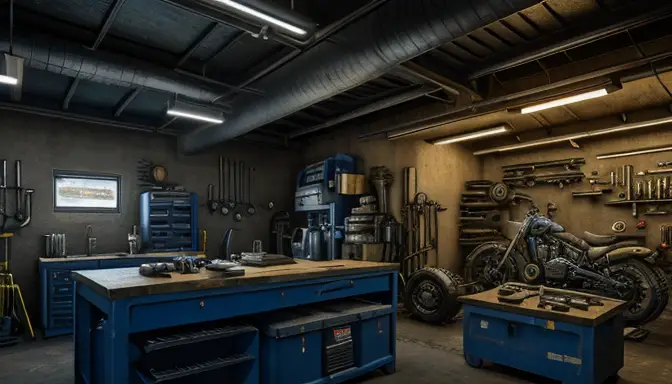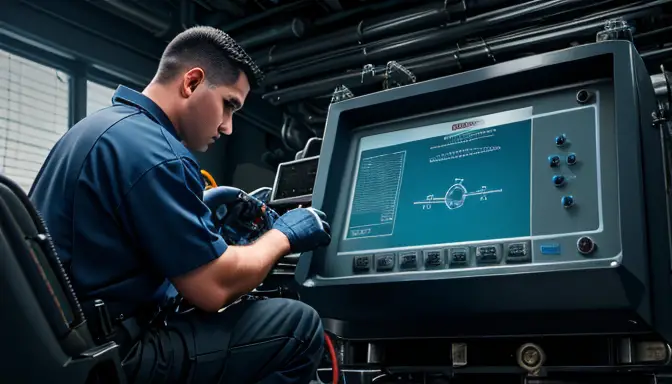When it comes to Twin Disc marine transmissions, various common problems can arise, impacting the performance and longevity of the system. Addressing these issues promptly is crucial to ensure smooth sailing and prevent any unexpected surprises. Let’s delve into the most frequent challenges encountered with Twin Disc marine transmissions and explore effective solutions to keep your vessel running smoothly.
- Overheating Issues: Overheating can be caused by factors such as low fluid levels, a malfunctioning cooling system, or a clogged filter. Regularly check fluid levels and ensure proper cooling system function to prevent overheating.
- Slipping Clutch: A slipping clutch can be attributed to worn-out clutch plates or improper adjustments. Identifying the root cause and making necessary adjustments or replacements can resolve this issue.
- Fluid Leaks: Fluid leaks can stem from damaged seals, loose fittings, or cracked components. Inspect the transmission system regularly for any signs of leaks and address them promptly to prevent further damage.
- Noise Concerns: Unusual noises such as grinding or whining can indicate internal issues within the transmission. Conduct a thorough inspection to pinpoint the source of the noise and take appropriate measures to rectify it.
- Electrical Troubleshooting: Electrical problems can disrupt the functioning of the transmission system. Check the electrical connections, fuses, and wiring for any issues and troubleshoot accordingly.
- Problems with Shifting: Difficulty in shifting gears can be caused by clutch problems, low fluid levels, or worn-out components. Address these issues promptly to ensure smooth shifting and optimal performance.
- Regular Maintenance Tips: Implementing routine maintenance practices such as fluid checks, filter replacements, and system inspections can prevent common problems and extend the lifespan of your Twin Disc marine transmission.
Overheating Issues
When it comes to twin disc marine transmissions, overheating can be a major concern that affects performance and longevity. Common causes of overheating issues include:
- Low fluid levels
- Blocked cooling passages
- Malfunctioning thermostat
To address overheating problems, it is essential to regularly check and maintain proper fluid levels, ensure cooling passages are clear of debris, and replace a faulty thermostat if needed. Additionally, monitoring the transmission temperature during operation can help prevent overheating and avoid potential damage to the system. By taking proactive measures to prevent overheating, you can ensure the smooth operation of your twin disc marine transmission for years to come.

Slipping Clutch
When it comes to twin disc marine transmissions, dealing with a slipping clutch can be a major headache for boat owners. A slipping clutch can lead to issues like loss of power, difficulty in acceleration, and decreased overall performance of the vessel. Identifying the reasons behind a slipping clutch is crucial in order to address the problem effectively. Some common causes of a slipping clutch in twin disc marine transmissions include:
- Worn-out clutch discs
- Improper clutch adjustment
- Contaminated or low transmission fluid
- Issues with the pressure plate
To fix a slipping clutch, it is essential to first diagnose the root cause. This may involve inspecting the clutch discs for wear and tear, adjusting the clutch properly, checking the transmission fluid levels, and examining the pressure plate for any damage. Regular maintenance and timely repairs can help prevent clutch slipping and ensure smooth operation of twin disc marine transmissions.
Fluid Leaks
When it comes to twin disc marine transmissions, fluid leaks can be a common and concerning issue. These leaks can lead to a variety of problems if not addressed promptly. One of the main sources of fluid leaks is damaged seals or gaskets within the transmission system. These components can wear out over time due to regular use and exposure to harsh marine conditions. Additionally, loose connections or fittings can also contribute to fluid leaks.
To effectively address fluid leaks in twin disc marine transmissions, it is essential to conduct a thorough inspection of the system. This involves checking all seals, gaskets, and connections for any signs of wear or damage. By identifying the source of the leak, you can determine the appropriate course of action to rectify the issue.
Common methods for resolving fluid leaks include replacing damaged seals or gaskets, tightening loose connections, and ensuring that all components are properly sealed. Regularly monitoring the transmission system for any signs of leaks and addressing them promptly can help prevent more significant issues down the line.

Noise Concerns
When it comes to twin disc marine transmissions, noise concerns can be a major issue that disrupts the smooth operation of the system. Understanding the various types of noises that can arise is crucial in diagnosing and resolving these problems effectively. Here are some common noise concerns that you may encounter:
- Whining: A high-pitched whining noise could indicate issues with the gears or bearings within the transmission. Proper lubrication and maintenance can help alleviate this noise.
- Clunking: A clunking sound may suggest loose components or worn-out parts. Inspecting and tightening any loose bolts or replacing worn components can address this issue.
- Rattling: Rattling noises could be a sign of loose or damaged parts within the transmission. Careful inspection and tightening of components can help eliminate this noise.
- Grinding: Grinding noises may indicate friction or misalignment within the transmission. Adjusting alignment, replacing worn gears, or addressing any friction points can help resolve this issue.
By identifying the specific type of noise and taking appropriate actions, you can effectively troubleshoot and eliminate noise concerns in twin disc marine transmissions, ensuring smooth and quiet operation.
Electrical Troubleshooting
When it comes to twin disc marine transmissions, electrical issues can be a real shocker, literally! Imagine cruising along the waves, and suddenly, an electrical problem throws a spanner in the works. But fear not, for every surge of electricity can be tamed with the right troubleshooting techniques.
One common electrical problem is a faulty connection, causing a disruption in the power supply to the transmission system. This can result in erratic behavior or complete shutdown. To tackle this, start by inspecting all wiring connections for corrosion, looseness, or damage. A simple fix like tightening a loose connection can spark a whole new life into your transmission.
Another electrifying issue could be a malfunctioning sensor, sending mixed signals to the transmission control unit. A sensor on the blink can lead to miscommunication and operational hiccups. To address this, carefully test each sensor for accuracy and replace any that are giving off wrong signals.
Moreover, don’t overlook the battery’s voltage levels. Low voltage can cause electrical gremlins to run rampant in your system. Regularly check the battery’s health and ensure it’s providing ample power to keep your transmission running smoothly.
When troubleshooting electrical problems, having a multimeter handy is like having a compass in a storm. This tool can help you pinpoint the exact source of the issue, whether it’s a short circuit, a faulty component, or a wiring problem.

Problems with Shifting
When it comes to twin disc marine transmissions, encountering problems with shifting can be a real headache for boat owners. Whether it’s difficulty in changing gears or issues with smooth transitions, shifting problems can disrupt the overall performance of the transmission system. But fear not, as there are solutions to address these pesky shifting issues and get your vessel back on track.
One common problem with shifting in twin disc marine transmissions is hard shifting, where the gears feel stiff and resistant to change. This can be caused by worn out clutch plates or improper clutch adjustments. To resolve this issue, it is essential to inspect the clutch components for wear and tear and make necessary adjustments to ensure smooth shifting.
Another shifting concern is slipping gears, where the transmission fails to engage properly, leading to a loss of power. This could be due to low transmission fluid levels or a faulty solenoid. Checking the fluid levels regularly and replacing any damaged solenoids can help prevent gear slipping and maintain optimal performance.
Moreover, delayed shifting can be a frustrating problem that affects the overall efficiency of the transmission system. This delay can be attributed to issues with the shift linkage or internal transmission components. By inspecting the shift linkage for any misalignment or damage and ensuring proper lubrication of internal components, you can improve shifting responsiveness.
Additionally, grinding noises during shifting can indicate underlying issues such as worn synchronizers or damaged gears. Addressing these problems promptly by replacing worn components and conducting regular inspections can help prevent further damage and maintain smooth shifting operations.
By understanding the common problems associated with shifting in twin disc marine transmissions and taking proactive measures to address them, boat owners can ensure a seamless sailing experience without any unexpected hitches.
Regular Maintenance Tips
Regular maintenance is crucial for ensuring the longevity and optimal performance of twin disc marine transmissions. By following a few simple tips, you can prevent common problems and keep your transmission running smoothly. Here are some essential maintenance practices to consider:
- Regular Fluid Checks: Check the transmission fluid level regularly and top up if necessary. Low fluid levels can lead to overheating and damage.
- Fluid Quality: Ensure that the transmission fluid is clean and free of debris. Contaminated fluid can cause issues with shifting and overall performance.
- Filter Replacement: Regularly replace the transmission filter to prevent clogs and maintain proper fluid flow.
- Inspect Seals and Gaskets: Check for any signs of leaks or damage to seals and gaskets. Addressing these issues promptly can prevent fluid leaks.
- Propeller Shaft Alignment: Periodically check the alignment of the propeller shaft to avoid vibration and wear on the transmission components.
Frequently Asked Questions
- What are the common causes of overheating in twin disc marine transmissions?
Overheating in twin disc marine transmissions can be caused by factors such as low fluid levels, clogged cooling passages, or a malfunctioning thermostat. Regular maintenance and monitoring can help prevent overheating issues.
- How can I identify a slipping clutch in my twin disc marine transmission?
A slipping clutch in a twin disc marine transmission may manifest as a delay in engagement or a loss of power. It is essential to address this issue promptly to avoid further damage to the transmission components.
- What should I do if I notice fluid leaks in my twin disc marine transmission?
If you observe fluid leaks in your twin disc marine transmission, it is crucial to determine the source of the leak and address it promptly. Common sources of leaks include damaged seals or gaskets.
- How can I troubleshoot unusual noises coming from my twin disc marine transmission?
Unusual noises in a twin disc marine transmission can indicate issues with components such as bearings or gears. Performing a thorough inspection and seeking professional assistance can help diagnose and resolve the problem.
- What are some essential maintenance tips for ensuring the optimal performance of twin disc marine transmissions?
Regularly checking fluid levels, inspecting for leaks, and following the manufacturer’s maintenance schedule are key practices to maintain the performance and longevity of twin disc marine transmissions.
- What Happened to Bluewater Yachts? The Inside Story - May 31, 2024
- Upgrade Your Boat’s Water Pump to the Mach 5 - May 30, 2024
- Upgrade Your Boat with the Big Stuff Stuffing Box - May 30, 2024


